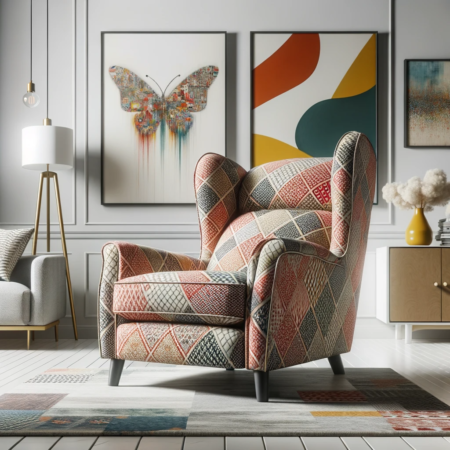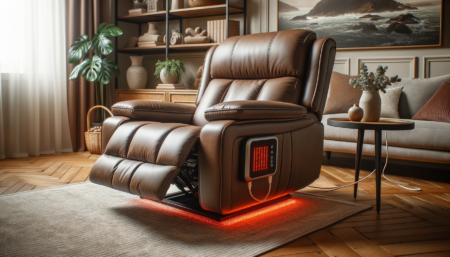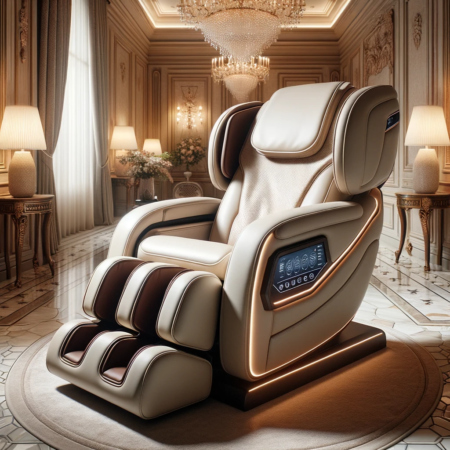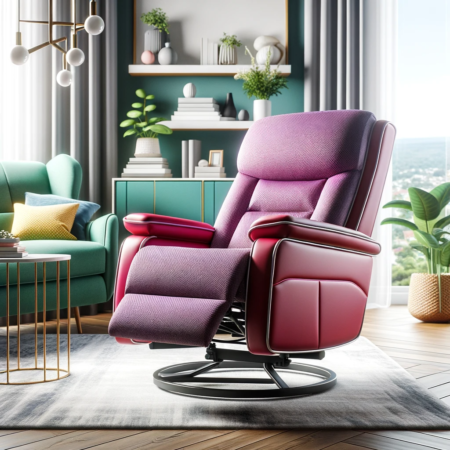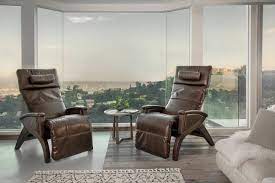Power recliners, while providing immense comfort and convenience, often come with the challenge of unsightly and potentially dangerous cords.
A well-thought-out approach to hiding these cords not only preserves the elegance of your home decor but also safeguards against accidents.
This introduction sets the stage for exploring the most efficient and aesthetically pleasing ways to keep power recliner cords out of sight.
Let’s check some best ways for hiding your power recliner cords!

Importance of Concealing Cords
Safety Concerns
Unmanaged cords from power recliners can pose a significant risk in homes. They can easily become tripping hazards, especially in dimly lit areas or for those who might not notice them, such as the elderly or young children.
Additionally, pets might find these cords intriguing, leading them to chew or play with them.
Children, too, with their innate curiosity, might tug or pull on these cords, risking damage to the recliner or, worse, potential injury to themselves.
Aesthetics & Maintaining a Living Space:
A tangle of cords can disrupt the visual harmony of a room. By effectively managing and hiding these cords, you maintain the sleek and modern appearance of your living space.
An organized space is not just pleasing to the eye but also creates a more relaxing and inviting environment.
Prolonging the Cords Life
When cords are left exposed and unmanaged, they are more susceptible to damage. They can get stepped on, tangled, or even frayed due to constant movement or friction.
By neatly organizing and hiding them, you are essentially protecting your investment, ensuring that the cords remain functional and safe for a longer period.
Understand the Cord: Length & Type
Power & Remote Cords
Power cords are the primary cables that provide electricity to your recliner, often thicker and more durable.
In contrast, remote control cords are typically thinner and connect the remote to the chair, allowing for the recliner’s movement. It’s essential to distinguish between the two to ensure proper handling and organization.

Measuring the length
To effectively manage and hide cords, first measure the current length of your cords. Then, determine the optimal length needed to reach your power source without excess slack. This assessment will guide your cord management strategy, ensuring a neater appearance and preventing unnecessary tangling.

Methods to Hide the Cords
1: Under the Rug Technique
A seamless way to hide cords is by tucking them beneath a rug. Ensure the cord is flat and doesn’t bunch up, then lay your rug over it, ensuring the cord is completely concealed and the rug sits evenly on the floor.
When using this technique, avoid placing cords under rugs in high footfall areas to reduce wear and tear. Periodically check the cord for any signs of overheating, ensuring safety.

2: Cord Sleeves and Covers
Cord sleeves and covers are designed accessories that help bundle and conceal multiple cords, offering a cleaner look and added protection. These are typically made of durable materials like neoprene or plastic and come in various colour and designs to match your home’s decor. By using cord sleeves, you can group your power recliner cord with other cables, keeping them organized and preventing them from tangling.
Types of Cord Sleeves: Neoprene Zipper Sleeves, Silicone Cord Covers, Velcro Sleeves, Braided Sleeving, Rigid PVC Channel Covers

3: Furniture Placement
One of the most straightforward solutions for managing power recliner cords is to position the recliner close to an electrical outlet. By doing so, you minimize the length of the exposed cord, reducing the chances of tripping hazards and creating a tidier appearance.

By placing side tables, decorative plants, or other furniture items in front of or around the recliner, you can obscure cords, ensuring they blend seamlessly into the room’s decor.
4: Wall Concealment
Cord concealers or raceways are specialized channels designed to house and hide cords along walls. They provide a neat and streamlined appearance, turning unsightly dangling cords into tidy lines that can blend with the wall color or decor. Available in various styles and materials.
How to Safely Affix Them to Walls
- When installing cord concealers, it’s essential to ensure they are securely attached to the wall.
- Start by cleaning the wall surface.
- Use the adhesive backing or clips provided, or for a more secure hold, consider using wall anchors or screws.
- Always follow the manufacturer’s instructions and avoid drilling near electrical outlets to ensure safety.
5: Cordless or Battery-Powered Recliners
As technology evolves, the furniture industry has seen the emergence of cordless or battery-powered recliners. These innovative pieces offer the same comfort and functionality as traditional power recliners but without the need for cords. They operate using built-in batteries, providing a clean, wire-free look that many homeowners appreciate.
Pros and Cons of Using Them:
| Pros | Cons |
| Aesthetic AppealNo visible cords mean a tidier and more streamlined look.FlexibilityReduces tripping hazards associated with cords. | Battery ReplacementLimited Operation TimeCordless recliners might be priced higher than traditional ones due to the incorporated technology. |
Common Problems
Placing cords near a heat source
When hiding cords, it’s important to avoid placing them near any heat sources, including radiators and heating vents, as this could create a fire hazard.
Using cords that are not rated for hiding: Regular power cords are not rated to go behind walls or under rugs, and can overheat or get damaged where you can’t see iT, Make sure to use cords that are specifically designed for hiding.
Not ensuring safety
When hiding cords, it’s important to ensure that cords are not pinched or damaged in any way, as this can also be a fire hazard. Additionally, make sure to avoid using cords that are frayed or damaged.
Not considering the layout of the room
Depending on the layout of your room and the location of your power source, you may need to use a combination of different methods to hide your power recliner cords effectively. Make sure to consider the layout of your room before choosing a method to hide cords.
Bottom Line
Effectively concealing power recliner cords enhances both safety and aesthetics in a living space. The best methods include routing cords underneath area rugs or carpeting, utilizing cord concealers that match the flooring or wall color, and opting for cord management boxes or clips to neatly bundle and tuck away excess length.
For a seamless look, some power recliners come with built-in cord management solutions, which are worth considering for new purchases. It’s also prudent to arrange furniture strategically to keep cords out of sight and to use the nearest outlets to minimize exposed lengths.
These solutions not only keep the living area tidy but also prevent tripping hazards, ensuring a clean and secure environment.
Frequently Asked Questions
Why is it essential to hide power recliner cords?
Beyond aesthetics, hiding cords reduces tripping hazards and potential damage to the cords, ensuring both safety and the longevity of your recliner.
Are cordless recliners a safer option than traditional ones?
Cordless recliners eliminate the need for cords, reducing tripping hazards. However, they require battery replacements and have a limited operation time between charges.
Can I use cord sleeves for other appliances too?
Absolutely! Cord sleeves are versatile and can be used for various appliances, not just power recliners.
Are wall concealers difficult to install?
Most wall concealers come with adhesive backs or clips, making installation straightforward. For a more secure fit, you might need basic tools like screws or wall anchors.
How do I choose the best method for hiding cords in my living room?
Consider your room’s layout, the number of cords, your decor preferences, and the safety of the method. It might be helpful to combine a few techniques for the best results.
Will hiding cords affect the performance of my power recliner?
No, if done correctly. However, ensure cords aren’t overly bent, pinched, or subjected to excessive heat to maintain their functionality.
